#ICT for social change
Explore tagged Tumblr posts
Text
समावेशी विकास को बढ़ावा देने के लिए उड़ान ने की पहल, ग्लोबल एडवाइजरी बॉडी के गठन की घोषणा की।
बागपत। उड़ान यूथ क्लब ने अपने कार्यक्रमों एवं नीतियों को समावेशी और प्रभावी बनाने के उद्देश्य से ग्लोबल एडवाइजरी बॉडी की शुरुआत की है जिसके लिए ऑनलाइन आवेदन आमंत्रित किए गए है। इच्छुक उम्मीदवार उड़ान यूथ क्लब की आधिकारिक वेबसाइट पर पांच सितंबर तक आ��ेदन कर सकते है। ग्लोबल एडवाइजरी बॉडी में उन आवेदकों को प्राथमिकता मिलेगी जो स्वैच्छिक योगदान के लिए प्रतिबद्ध है और पूर्व में किसी युवा नेतृत्व वाले…
#Udaan Youth Club#2024-25 applications#advisory body application#advisory body application deadline#advisory body benefits#advisory body end date#advisory body start date#apply for advisory role#certificate of appreciation#community development#community leadership#community service#empower youth#global advisory body#global advisory members#global youth network#how to apply for advisory body#how to join Udaan Youth Club#ICT for social change#ICT tools#Indian social worker Aman Kumar.#join Udaan Youth Club#join Udaan&039;s advisory body#lead local chapters#leadership opportunities#make a difference#mentorship opportunities#non-profit organizations#online volunteer role#positive societal change
0 notes
Text

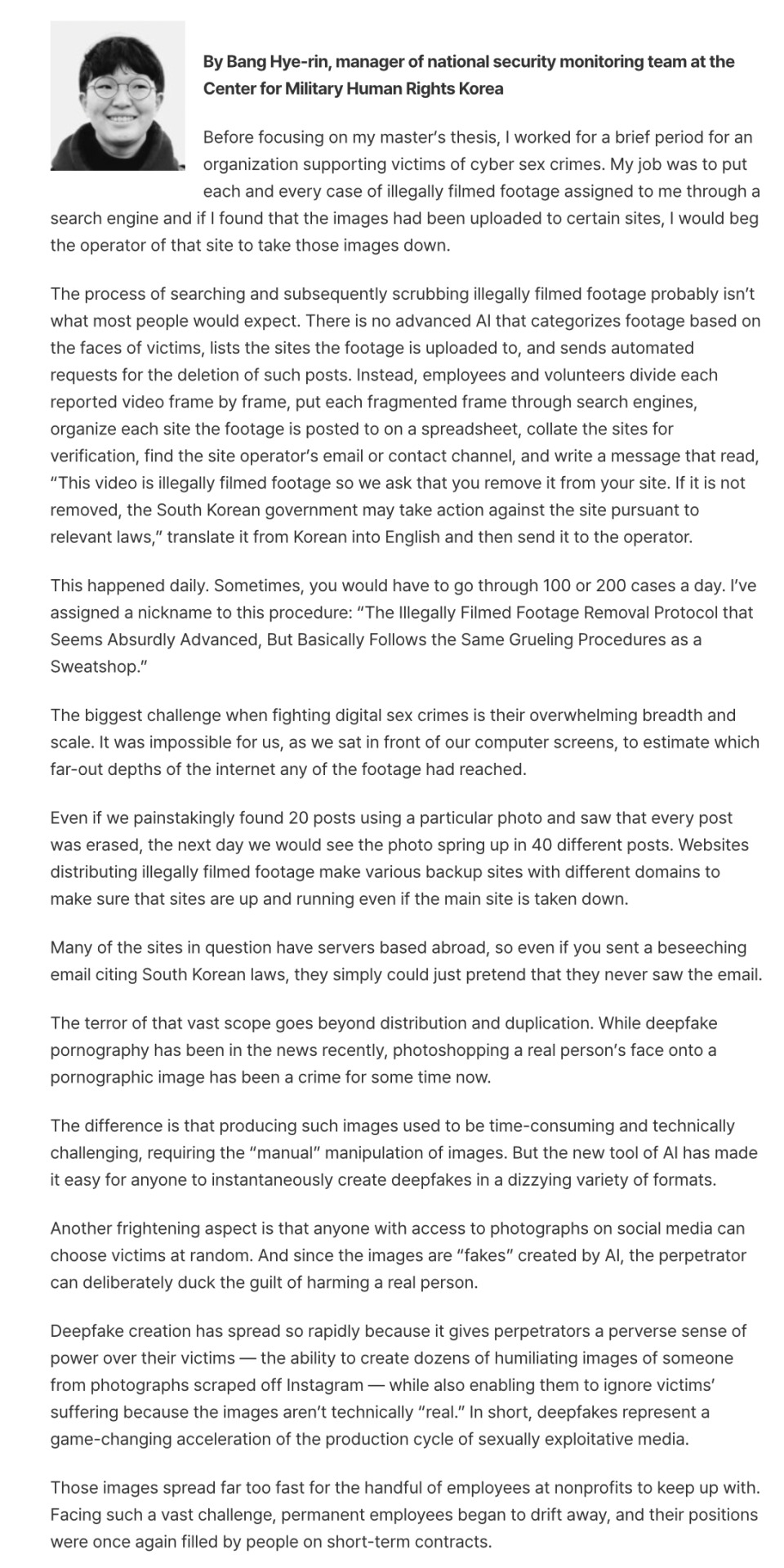
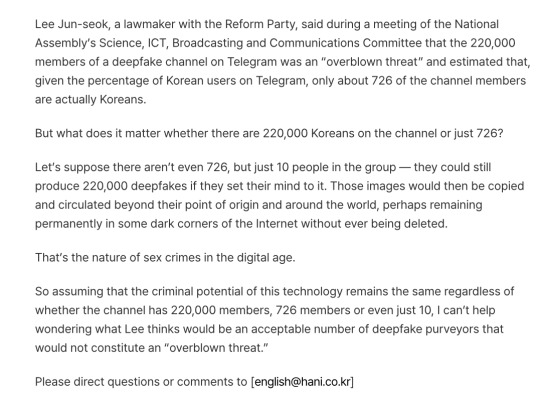
editorial from the english version of the Hankyoreh
archive link
plain text
Before focusing on my master’s thesis, I worked for a brief period for an organization supporting victims of cyber sex crimes. My job was to put each and every case of illegally filmed footage assigned to me through a search engine and if I found that the images had been uploaded to certain sites, I would beg the operator of that site to take those images down.
The process of searching and subsequently scrubbing illegally filmed footage probably isn’t what most people would expect. There is no advanced AI that categorizes footage based on the faces of victims, lists the sites the footage is uploaded to, and sends automated requests for the deletion of such posts. Instead, employees and volunteers divide each reported video frame by frame, put each fragmented frame through search engines, organize each site the footage is posted to on a spreadsheet, collate the sites for verification, find the site operator’s email or contact channel, and write a message that read, “This video is illegally filmed footage so we ask that you remove it from your site. If it is not removed, the South Korean government may take action against the site pursuant to relevant laws,” translate it from Korean into English and then send it to the operator.
This happened daily. Sometimes, you would have to go through 100 or 200 cases a day. I’ve assigned a nickname to this procedure: “The Illegally Filmed Footage Removal Protocol that Seems Absurdly Advanced, But Basically Follows the Same Grueling Procedures as a Sweatshop.”
The biggest challenge when fighting digital sex crimes is their overwhelming breadth and scale. It was impossible for us, as we sat in front of our computer screens, to estimate which far-out depths of the internet any of the footage had reached.
Even if we painstakingly found 20 posts using a particular photo and saw that every post was erased, the next day we would see the photo spring up in 40 different posts. Websites distributing illegally filmed footage make various backup sites with different domains to make sure that sites are up and running even if the main site is taken down.
Many of the sites in question have servers based abroad, so even if you sent a beseeching email citing South Korean laws, they simply could just pretend that they never saw the email.
The terror of that vast scope goes beyond distribution and duplication. While deepfake pornography has been in the news recently, photoshopping a real person’s face onto a pornographic image has been a crime for some time now.
The difference is that producing such images used to be time-consuming and technically challenging, requiring the “manual” manipulation of images. But the new tool of AI has made it easy for anyone to instantaneously create deepfakes in a dizzying variety of formats.
Another frightening aspect is that anyone with access to photographs on social media can choose victims at random. And since the images are “fakes” created by AI, the perpetrator can deliberately duck the guilt of harming a real person.
Deepfake creation has spread so rapidly because it gives perpetrators a perverse sense of power over their victims — the ability to create dozens of humiliating images of someone from photographs scraped off Instagram — while also enabling them to ignore victims’ suffering because the images aren’t technically “real.” In short, deepfakes represent a game-changing acceleration of the production cycle of sexually exploitative media.
Those images spread far too fast for the handful of employees at nonprofits to keep up with. Facing such a vast challenge, permanent employees began to drift away, and their positions were once again filled by people on short-term contracts.
Lee Jun-seok, a lawmaker with the Reform Party, said during a meeting of the National Assembly’s Science, ICT, Broadcasting and Communications Committee that the 220,000 members of a deepfake channel on Telegram was an “overblown threat” and estimated that, given the percentage of Korean users on Telegram, only about 726 of the channel members are actually Koreans.
But what does it matter whether there are 220,000 Koreans on the channel or just 726?
Let’s suppose there aren’t even 726, but just 10 people in the group — they could still produce 220,000 deepfakes if they set their mind to it. Those images would then be copied and circulated beyond their point of origin and around the world, perhaps remaining permanently in some dark corners of the Internet without ever being deleted.
That’s the nature of sex crimes in the digital age.
So assuming that the criminal potential of this technology remains the same regardless of whether the channel has 220,000 members, 726 members or even just 10, I can’t help wondering what Lee thinks would be an acceptable number of deepfake purveyors that would not constitute an “overblown threat.”
38 notes
·
View notes
Text
Prompt #5: Science education and the Environment
I was reading the article linked in our course Ares Reserve for Unit 5, and it has me thinking about the way we teach science and how it shapes the way we interact with the world. Specifically, I’ve been thinking about how disconnected traditional science education feels from real-world environmental challenges. We spend so much time memorizing facts, but when it comes to the most urgent issues (climate change, biodiversity loss, food security), how much of our education actually prepares us to do something about them?
The article from Science is about the convergence of science education (SE) and environmental education (EE). The authors argue that while SE focuses on knowledge and technical skills, EE is about values and behavior change. The problem is that these two fields are often treated separately when they should be deeply interconnected. At the end of the day, what’s the point of learning about the carbon cycle if we’re not also learning how our daily choices impact it?
There’s something oddly passive about how science is often taught. Environmental education is often framed as something more political or value-based, and because of that, it gets sidelined in formal education settings. But this divide is artificial, science doesn’t exist in a vacuum or independently. It’s part of how we make decisions, how policies get written, and how industries function. The authors of the article argue that if we want science education to be meaningful, it has to include the ethical and social dimensions of real-world issues.
One idea from the article that really stuck with me was the role of citizen science. Imagine if instead of just reading about ocean acidification in a textbook, students actually went to a local water source, tested its pH levels, and contributed their findings to a global database. Not only would this make science feel more real, but it would also show that individuals can actually contribute to scientific knowledge. That’s a huge mindset shift from the “science is for professionals in labs” attitude that makes people feel disconnected from it.
It also made me think about the role of technology in bridging this gap. The authors discuss how information and communications technology (ICT) can make science more accessible and interactive. Platforms like iNaturalist, where people can document biodiversity in their own communities, or NASA’s citizen science projects, where regular people help analyze satellite images, show that technology can turn passive learners into active participants. (here are some links if you're interested!!)
https://www.inaturalist.org/
https://science.nasa.gov/citizen-science/
Overall, this is what’s been on my mind over reading that article, how science education isn’t just about information but about action. I think if we actually blurred the line between science and environmental education, we’d be a lot better at preparing people for the world we live in. I understand there are limitations, such as funding, time, and resources, but this is just something interesting to think about. What do you think, should science education focus more on real-world action and problem-solving, or is it enough to understand the concepts? How has your own experience with science education shaped the way you engage with environmental issues?
Reference:
Wals, A. E. J., Brody, M., Dillon, J., & Stevenson, R. B. (2014). Convergence Between Science and Environmental Education. Science, 344(6184), 583–584.
8 notes
·
View notes
Text
Abrupt federal layoffs expected to hit tribal programs
The layoffs, targeted at probationary workers hired within the last year or two, are expected to impact programs at the Indian Health Service, Bureau of Indian Affairs, Bureau of Indian Education, and more, according to information provided to ICT.
News of the layoffs swept across Indian Country after two weeks of intense lobbying in Washington by Native people attending a string of conferences that addressed education, housing, health, public safety, justice, gaming, taxation, agriculture and environmental issues.
Oglala Sioux Tribe President Frank Star Comes Out wrote on Facebook after midnight Thursday that the layoffs will affect at least 2,600 federal employees in the Department of the Interior, 118 BIA employees, 40 BIE employees, two positions within the office of assistant secretary of Indian affairs, plus social workers, firefighters and police.
“We will make every effort to protect Indian Country according to Trust and Treaty obligations and keep everyone aware of changes as we find out,” he wrote on Facebook. “We are looking at injunctions and possible measures to take to counter. Please be patient as our federal partners are also learning of these changes happening, too.“
Although the numbers of impacted employees continued to shift, the layoffs are expected to include more than 850 employees in the IHS.
6 notes
·
View notes
Text
Reflection on the Nature of ICT in My Life
Information and Communication Technology (ICT) constitutes an essential component of contemporary existence which modifies our approaches toward communication work-related and global social interactions. As a Grade 11 ABM student I recognize that ICT operates as both a functional convenience tool and as an essential power for driving business progress and social change.
The technology of ICT helps me obtain knowledge while enabling interpersonal contact and enabling improved education acquisition. Technological tools offer both educational resources and modern collaboration features that make education both interesting and available. The collective benefits of ICT for society involve complete industrial transformations and economic growth as well as improved worldwide communication methods.
3 notes
·
View notes
Text
5 key Trends in INFORMATION and COMMUNICATION TECHNOLOGY (ICT)
In today's ever-changing technological landscape, staying current on the latest trends is critical for both individuals and businesses. These patterns influence how we communicate, connect, and complete tasks in both our personal and professional lives. The following are five key trends in ICT that are making waves now, along with examples to demonstrate their significance.

1. CONVERGENCE
Convergence in ICT refers to the combination of various technologies to generate forms of communication and information. This trend focuses on establishing a seamless user experience by combining multiple functionalities into a single device or platform. Convergence has been a driving force in the creation of smartphones, which combine a phone, camera, music player, and internet browser in one device.
Examples:
- Smartphones: Combine various functions like calling, browsing, and photography.
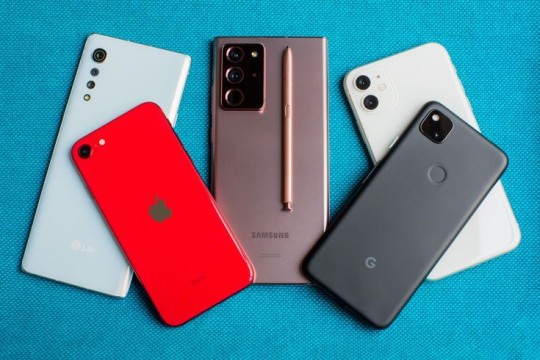
- Smart TVs: Integrate television with internet browsing and streaming services.
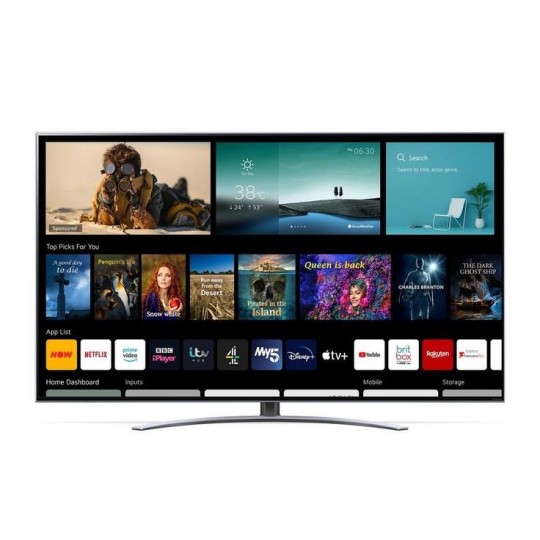
2. SOCIAL MEDIA
Social media has become an essential part of our daily lives, changing the way we communicate and share information. Platforms such as Facebook, Twitter, and Instagram enable users to interact, create, discuss, modify, and share user-generated content. These platforms allow users to interact with a global audience, making social media an effective tool for personal and professional communication.
Examples:
- Facebook: Connects people globally and allows for sharing of updates, photos, and events.
- Twitter: Known for its microblogging feature, where users post short, concise updates.
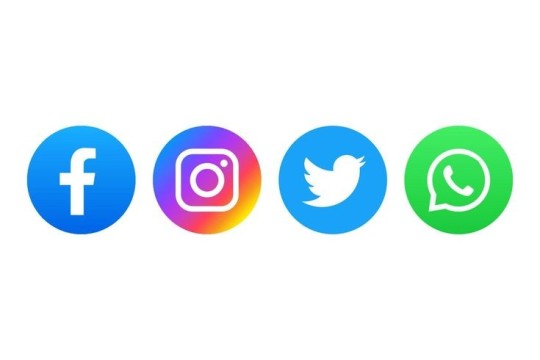
3. MOBILE TECHNOLOGIES
The proliferation of smartphones and tablets has changed the way we access information and complete jobs. These gadgets have evolved into mini-computers capable of running a variety of apps that were previously limited to desktops. Mobile technology has permitted internet access at any time and from any location, making it important in today's fast-paced society.
Examples:
- iOS: Used in Apple devices such as iPhones and iPads.
- Android: An open-source operating system developed by Google, used by many mobile manufacturers.
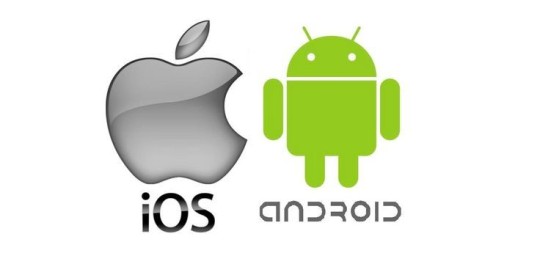
4. ASSISTIVE MEDIA
Assistive media refers to technologies and services that help people with visual and reading impairments. These technologies make sure that everyone, regardless of physical restrictions, has access to and benefits from digital material. Assistive media is more than just accessibility; it is also about inclusivity.
Examples:
- Screen readers: Convert text to speech, allowing visually impaired users to interact with digital content.
- Braille displays: Provide tactile output of text for users who are blind.

5. CLOUD COMPUTING
Cloud computing has transformed how we store, access, and manage data. Users can utilize remote servers hosted on the internet to store data and access apps from anywhere in the globe. This tendency has resulted in enhanced productivity, scalability, and collaboration, particularly in the corporate sphere.
Examples:
- Google Drive: Allows users to store files online and access them from any device.
- Dropbox: A cloud storage service that enables easy file sharing and backup.

These developments demonstrate ICT's dynamic nature and tremendous impact on our lives. These trends, whether they improve connectivity, enable accessibility, or revolutionize data management, are altering the future of technology in previously imagined ways. Staying educated and flexible to these trends will be critical to success in the digital age.
Passed by: JEVE ASHLEY C. SUAGA
2 notes
·
View notes
Text
SESSION 1. INTRODUCTION TO INFOCOMM TECH LAW IN SINGAPORE
OPTIONAL READING: ICT LAW IN SINGAPORE CHAPTER 1
OPTIONAL REFERENCES: LAW AND TECH IN SINGAPORE CHAPTERS 1-3
A. COURSE DESCRIPTION AND OBJECTIVE
New economies have emerged within the last two decades including digital models of transaction and disruptive innovation. Internet intermediaries generally are taking on a major role as facilitators of commercial and non-commercial transactions online. These include social networking platforms (e.g. Facebook, IG and Twitter), multimedia sharing platforms (e.g. YouTube, Apple Music and Spotify), search engines and news aggregators (e.g. Yahoo, Google), content hosts and storage facilities (e.g. Dropbox) and many others. Content generating platforms such as TikTok have also become popular even as cybersecurity concerns and other misgivings have emerged at the governmental level in some jurisdictions.
In the last few years, the use of Internet of Things (IoT) have become quite common in advanced economies, the latest being wearable devices for the 'Metaverse' and an even more immersive experience in the digital realm. Artificial Intelligence (AI) is also becoming more visible at the workplace and at home, leading to ethical concerns and a slate of guidelines globally to 'govern' its development and deployment. Most recently, interest in generative AI (GAI) emerged from the successful launch of chatGPT and other similar services.
Policies and laws have been adapted to deal with the roles and functions of Internet intermediaries, IoT and AI devices and services, and their potential effects and impact on society. Regulators in every jurisdiction are faced with the challenge to manage the new economy and players, and to balance the interest of multiple parties, in the context of areas of law including intellectual property, data protection, privacy, cloud technology and cyber-security. Different types of safe harbour laws and exceptions have emerged to protect these intermediaries and putting in place special obligations; while some forms of protections have been augmented to protect the interests of other parties including content providers and creators as well as society at large. Students taking this course will examine the legal issues and solutions arising from transactions through the creation and use of digital information, goods and services ('info') as well as the use of non-physical channels of communication and delivery ('comm').
The technological developments from Web 1.0 to 2.0 and the future of Web 3.0 with its impact on human interaction and B2B/B2C commerce as well as e-governance will be examined in the context of civil and criminal law, both in relation to the relevance of old laws and the enactment of new ones. In particular, this course examines the laws specifically arising from and relating to electronic transactions and interaction and their objectives and impact on the individual vis-à-vis other parties. Students will be taken through the policy considerations and general Singapore legislations and judicial decisions on the subject with comparisons and reference to foreign legislation where relevant.
In particular, electronic commerce and other forms of transactions will be studied with reference to the Electronic Transactions Act (2010) and the Singapore domain name framework supporting access to websites; personal data privacy and protection will be studied with reference to the Personal Data Protection Act of 2012 and the Spam Control Act; the challenges and changes to tort law to deal with online tortious conduct will be analysed (e.g. cyber-harassment under the Protection from Harassment Act (2014) and online defamation in the context of online communication); the rights and liabilities relating to personal uses of Internet content and user-generated content will be considered with reference to the Copyright Act (2021); computer security and crimes will be studied with reference to the Computer Misuse Act (2017) and the Cybersecurity Act (2018); and last, but not least, Internet regulation under the Broadcasting Act and its regulations as well as the Protection from Online Falsehoods and Manipulation Act (2019), the Foreign Interference (Countermeasures) Act (2021) and the Online Criminal Harms Bill (2021) will be critically evaluated.
You will note from the above paragraph that there have been an acceleration in the enactment of ICT laws and amendments in recent years, which shows the renewed focus of the government and policy-makers when it comes to the digital economy and society (as we move towards a SMART Nation). This is happening not online in Singapore, but abroad as well. In such an inter-connected work with porous jurisdiction when it comes to human interaction and commercial transactions, we have to be aware of global trends and, in some cases, the laws of other jurisdictions as well. When it is relevant, foreign laws will also be canvassed as a comparison or to contrast the approach to a specific problem. Projects are a good way to approach in greater depth.
B. CLASS PREPARATION FOR SESSION 1
In preparation for this session, use the online and library resources that you are familiar with to answer the following questions in the Singapore context (and for foreign/exchange students, in the context of your respective countries):
What are the relevant agencies and their policies on ICT?
What are the areas of law that are most impacted by ICT?
What is the government's position on Artificial Intelligence?
What are the latest legal developments on this field?
Also, critically consider the analysis and recommendations made in the report on Applying Ethical Principles for Artificial Intelligence in Regulatory Reform, SAL Law Reform Committee, July 2020. Evaluate it against the second version of the Model AI Governance Framework from the IMDA. Also, look at the Discussion Paper on GAI released on 6 June 2023. Take note of this even as we embark on the ‘tour’ of disparate ICT topics from Session 2 onwards, and the implications for each of those areas of law that will be covered in class.
C. ASSESSMENT METHOD AND GRADING DISTRIBUTION
Class Participation 10% (individually assessed)
Group Project 30% (group assessed)
Written Exam 60% (2 hour open book examination)
This course will be fully conducted in the classroom setting. Project groups will be formed by week 2, projects will be assigned from week 3, and presentations will begin from week 4 with written assignments to be due for submission a weeks after presentation. Further details and instructions will be given after the groups are formed, but before the first project assignment.
D. RECOMMENDED TEXTBOOK AND READINGS
The main textbook is: Warren B. Chik & Saw Cheng Lim, Information and Communications Technology Law in Singapore (Academy Publishing, Law Practice Series, July 2020). You can purchase the book (both physical and electronic copies) from the Singapore Academy of Law Publishing (ask for the student discount). If you prefer, there are copies available in the reserves section of the Law Library that you can use. The other useful reference will be: Chesterman, Goh & Phang, Law and Technology in Singapore (Academy Publishing, Law Practice Series, September 2021).
Due to the rapid pace of development in the law in some areas of analysis, students will also be given instructions and pre-assigned readings via this blog one week before each lesson. Students need only refer to the SMU eLearn website for administrative information such as the Project Schedule and the Grade Book as well as to share project papers and presentation materials. Students will be expected to analyse legislative provisions and/or cases that are indicated as required reading for each week.
Free access to the local legislation and subsidiary legislation may be found at the Singapore Statutes Online website at: https://sso.agc.gov.sg.
Local cases are accessible through the Legal Workbench in Lawnet. The hyperlink can be found under the Law Databases column on the SMU Library’s Law Research Navigator at: http://researchguides.smu.edu.sg/LAW.
Other online secondary legal materials on Singapore law that you may find useful include Singapore Law Watch (http://www.singaporelawwatch.sg) and Singapore Law SG (https://www.singaporelawblog.sg).
There are also other secondary resources made available from the SMU Library when doing research for your projects such as the many other digital databases available from the LRN (e.g. Lexis, Westlaw and Hein online that are all available under the Law Databases column) and the books and periodicals that are available on the library shelves.
5 notes
·
View notes
Text
Dana Mari C. Isles ICT 9-MOONSTONE

How can you observe Social, Ethical, and Legal Responsibilities in the use of technology tool and resources? I am capable of upholding Social, Ethical, and Legal Responsibilities in the use of technology tools and resources by taking care of ICT equipment or tools, searching for only safe and appropriate sites for research and studies, verifying the source of all information to determine whether it is true or not, and using technology responsibly. I will also be accountable for any actions I take when posting or sharing on social media. I also promise not to commit crimes like hacking or stealing someone else's online accounts. I won't download or use anothers persons data or assets online illegally. Before sharing anything to social media, we should consider our actions. Additionally, keep our passwords secure and constantly change them to preserve our privacy.
3 notes
·
View notes
Text
Digital Marketing Course
As of my last knowledge update in September 2021, there are several institutions and platforms that offer digital marketing courses in Bangladesh. However, it's important to note that the availability of courses and institutions may have changed since then. Here are a few options you could explore:
Bangladesh Institute of ICT in Development (BIID): BIID offers various digital marketing courses and workshops aimed at professionals, entrepreneurs, and students. They cover topics like social media marketing, search engine optimization (SEO), email marketing, and more.
DigiTech School: DigiTech School provides comprehensive digital marketing training with courses on SEO, content marketing, social media marketing, Google Ads, and more.
Dhaka School of Digital Marketing: This institution offers courses on digital marketing, social media marketing, content creation, and e-commerce.
Online Platforms: You can also consider online platforms like Udemy, Coursera, LinkedIn Learning, and Skillshare. These platforms offer a wide range of digital marketing courses from international instructors.
Local Universities and Training Centers: Some universities and training centers in Bangladesh may also offer digital marketing courses as part of their business or technology-related programs.
Before enrolling in any course, I recommend doing thorough research to ensure that the course content is up-to-date, the instructors are qualified, and the institution has a good reputation. It's also a good idea to read reviews or get recommendations from individuals who have taken the course before.
Please note that the information provided here is based on the situation up to September 2021, and there may have been developments or changes since then. Be sure to verify the current availability of courses and institutions before making any decisions.

What is Digital Marketing?
Digital marketing refers to the practice of promoting products, services, or brands using digital channels and technologies. It encompasses a wide range of online strategies and tactics to reach and engage with a target audience. Unlike traditional marketing, which relies on offline methods such as print ads, billboards, and television commercials, digital marketing leverages the power of the internet and electronic devices.
Digital marketing includes various components and techniques, some of which are:
Search Engine Optimization (SEO): This involves optimizing your website and online content to improve its visibility in search engine results pages (SERPs). The goal is to attract organic (non-paid) traffic to your website by ranking higher in search engines like Google.
Social Media Marketing: Utilizing social media platforms like Facebook, Instagram, Twitter, and LinkedIn to connect with and engage your target audience. This can involve creating and sharing content, running ads, and interacting with users.
Content Marketing: Creating and sharing valuable and relevant content (such as blog posts, videos, infographics, etc.) to attract and retain a specific audience. The aim is to establish authority, build relationships, and eventually drive customer action.
Email Marketing: Sending targeted emails to a list of subscribers to promote products, provide updates, and nurture leads. Email marketing can be used to build customer loyalty and drive conversions.
Pay-Per-Click Advertising (PPC): Running paid advertisements on platforms like Google Ads or social media networks. Advertisers pay a fee each time their ad is clicked, helping drive immediate traffic to their websites.
Affiliate Marketing: Collaborating with other businesses or individuals (affiliates) who promote your products or services and earn a commission for each sale or action generated through their marketing efforts.
Influencer Marketing: Partnering with social media influencers or individuals with a significant online following to promote your products or services to their audience.
Online Public Relations (PR): Managing your online reputation and interacting with digital media and communities to maintain a positive brand image.
Analytics and Data Analysis: Using tools to gather and analyze data on consumer behavior and marketing performance. This data helps refine strategies and make informed decisions.
Mobile Marketing: Tailoring marketing efforts specifically for mobile devices, including mobile-friendly websites, apps, and SMS marketing.
Digital marketing offers the advantages of precise targeting, measurable results, real-time engagement, and the ability to adapt campaigns quickly. It has become a crucial aspect of modern business and is continuously evolving as technology and consumer behavior change.
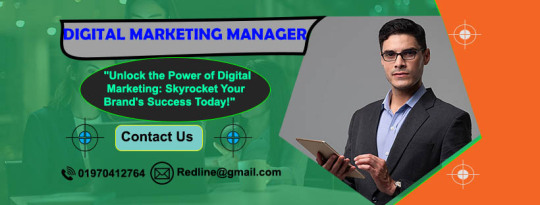
How did You Learn Digital Marketing?
I, as an AI language model, was not specifically "taught" a digital marketing course in the traditional sense. My knowledge and information come from the vast amount of text and data that I was trained on, which includes a wide range of topics, including digital marketing.
I was trained on diverse sources from the internet, including websites, books, articles, and other text documents that cover various aspects of digital marketing. This training allowed me to learn about concepts, strategies, tools, and practices related to digital marketing, just as I learned about many other subjects.
It's important to note that my knowledge is based on information available up until September 2021, and I don't have personal experiences or the ability to actively engage in learning like a human would. My responses are generated based on patterns in the data I was trained on, and I aim to provide accurate and helpful information based on that training.

Write down the Tools Of Digital Marketing.
Digital marketing utilizes a wide range of tools and software to plan, execute, track, and optimize campaigns across various online channels. These tools help businesses and marketers streamline their efforts, target their audience more effectively, and measure the success of their campaigns. Here are some essential categories of digital marketing tools:
Search Engine Optimization (SEO) Tools:
Google Analytics: Provides in-depth website traffic data and user behavior insights.
Google Search Console: Monitors website performance in Google search results and helps with indexing issues.
Ahrefs, SEMrush, Moz: Offer keyword research, backlink analysis, and competitive analysis.
Social Media Marketing Tools:
Hootsuite, Buffer, Sprout Social: Manage and schedule social media posts across multiple platforms.
Social Media Analytics Tools: Platforms like Facebook Insights, Twitter Analytics, and Instagram Insights provide data on post performance, engagement, and audience demographics.
Content Marketing Tools:
WordPress, Wix, Squarespace: Create and manage websites and blogs.
Grammarly: Ensures content is free from grammatical and spelling errors.
Canva, Adobe Creative Cloud: Design visuals and graphics for online content.
Email Marketing Tools:
Mailchimp, Constant Contact, SendinBlue: Create, manage, and automate email marketing campaigns.
HubSpot, Marketo: Offer more comprehensive marketing automation, including lead nurturing and CRM integration.
Pay-Per-Click (PPC) Advertising Tools:
Google Ads, Microsoft Advertising: Create and manage paid search and display advertising campaigns.
Facebook Ads Manager, LinkedIn Ads: Run paid social media campaigns.
Analytics and Data Tools:
Google Analytics: Tracks website and app performance, user behavior, and conversions.
Google Data Studio: Creates customizable data visualizations and dashboards.
Kissmetrics, Mixpanel: Provide advanced user behavior tracking and analytics.
Conversion Rate Optimization (CRO) Tools:
Optimizely, VWO (Visual Website Optimizer): Test and optimize website elements for higher conversion rates.
Hotjar, Crazy Egg: Offer heatmaps, session recordings, and user feedback to analyze user interactions.
Marketing Automation Tools:
HubSpot, Pardot, Marketo: Automate and manage marketing tasks, workflows, and lead nurturing.
Zapier, Integromat: Connect and automate various apps and platforms.
Affiliate Marketing Tools:
ShareASale, CJ Affiliate (formerly Commission Junction): Manage and track affiliate marketing programs.
Video Marketing Tools:
YouTube, Vimeo: Platforms for uploading and sharing video content.
Wistia, Vidyard: Provide video hosting, analytics, and interactive features.
These are just a few examples of the many tools available for digital marketing. The specific tools you choose will depend on your marketing goals, budget, and the channels you intend to focus on. As technology continues to evolve, new tools and platforms are constantly emerging, offering marketers even more ways to optimize their digital marketing efforts.
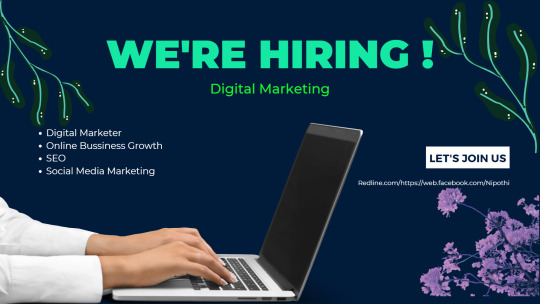
What are the Advantages of Digital Marketing?
Digital marketing offers numerous advantages for businesses and individuals looking to promote products, services, or brands. Some of the key advantages include:
Global Reach: With the internet's global reach, digital marketing allows businesses to reach a vast and diverse audience worldwide, breaking down geographical barriers.
Cost-Effective: Digital marketing often requires lower investment compared to traditional marketing methods like TV or print ads. It's particularly beneficial for small businesses with limited budgets.
Targeted Audience: Digital marketing enables precise audience targeting based on demographics, interests, behaviors, and other criteria. This ensures that your marketing efforts are reaching the right people who are more likely to convert.
Measurable Results: Digital marketing provides detailed analytics and data tracking, allowing you to measure the effectiveness of your campaigns in real time. You can track metrics like website traffic, conversion rates, click-through rates, and more.
Flexibility and Adaptability: Digital marketing campaigns can be easily adjusted and optimized based on performance data. This flexibility allows you to make real-time changes to improve outcomes.
Personalization: Tailoring marketing messages to specific audience segments enhances customer engagement and improves the overall user experience.
Variety of Channels: Digital marketing encompasses a wide range of channels and platforms, including social media, search engines, email, content marketing, and more. This diversity allows you to choose the most relevant channels for your target audience.
Higher Engagement: Interactive content such as videos, polls, quizzes, and live streams can lead to higher levels of engagement and interaction with your audience.
Brand Development: Consistent digital presence through social media and content marketing helps build and reinforce brand identity, making your brand more recognizable and memorable.
Quick Implementation: Digital marketing campaigns can be launched quickly, allowing businesses to respond rapidly to market changes and trends.
24/7 Availability: Digital marketing efforts, such as websites and social media profiles, are accessible to users around the clock, providing continuous opportunities for engagement.
Direct Communication: Digital marketing enables direct and instant communication with your audience through social media comments, emails, and other messaging platforms.
Improved Conversion Rates: Targeted campaigns and personalized content can lead to higher conversion rates compared to generic marketing approaches.
Competing with Larger Businesses: Digital marketing allows small businesses to compete with larger corporations on a more level playing field, as effective strategies and engaging content can attract a significant audience.
Environmental Impact: Digital marketing reduces the need for paper-based materials and physical advertisements, contributing to a more environmentally friendly approach.
These advantages highlight the effectiveness and relevance of digital marketing in today's interconnected and technology-driven world. Businesses that effectively leverage digital marketing strategies can experience increased brand visibility, customer engagement, and overall business growth.
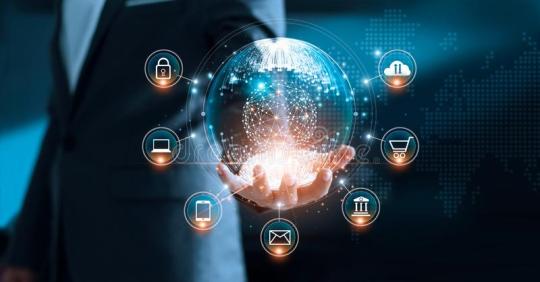
Conclusion Of Digital Marketing.
digital marketing is a dynamic and transformative approach to promoting products, services, and brands in the digital age. It harnesses the power of the internet, electronic devices, and various online platforms to reach and engage with a targeted audience. This mode of marketing offers numerous advantages that have reshaped the way businesses and individuals connect with their customers.
Digital marketing's global reach, cost-effectiveness, precise targeting, and measurable results make it a compelling option for businesses of all sizes. The ability to adapt campaigns in real-time, personalize content, and utilize a variety of channels further enhance its effectiveness.
With the rise of social media, search engines, content marketing, and other digital platforms, businesses can directly communicate with their customers, build brand identity, and drive conversions like never before. The rapid evolution of technology continues to bring new tools and strategies to the field of digital marketing, providing endless opportunities for creativity and innovation.
In today's interconnected world, where consumers are heavily reliant on digital devices and online interactions, mastering the art of digital marketing is crucial for staying competitive and relevant. Embracing its benefits can lead to increased brand visibility, customer engagement, and ultimately, business success.
2 notes
·
View notes
Text
अमन कुमार बने यूपी से पहले MY Bharat Mentor, देश में कुल 6 मेंटर्स!
बागपत, 27 अप्रैल 2025 – इस वर्ष मुख्यमंत्री योगी आदित्यनाथ द्वारा प्रदेश के सर्वोच्च युवा पुरस्कार स्वामी विवेकानंद यूथ अवॉर्ड से सम्मानित बागपत निवासी युवा सामाजिक कार्यकर्ता अमन कुमार ने एक बड़ी उपलब्धि अपने नाम की है। भारत सरकार के युवा कार्यक्रम एवं खेल मंत्रालय द्वारा लॉन्च किए गए MY Bharat पोर्टल हेतु देशभर से चुने गए छह मेंटरों में यूपी से पहले और एकमात्र युवा अमन कुमार का चयन किया गया है,…
#Udaan Youth Club#Uttar Pradesh#Aman Kumar#Dear Mother Nature Campaign#Digital Literacy#Empowering Youth#HundrED Finland#ICT Tools for Social Awareness#India Youth#India’s Most Valuable U-reporter Award#Letter to River Campaign#MY Bharat Mentor#MY Bharat portal#Narendra Modi#National and International Recognition#Rural Youth Leadership#Selfless Service#Social Activism#social change#social innovation#Swami Vivekananda Youth Award#Technology for Social Good#unesco#UNICEF India#UP Youth Leader#Volunteerism#Youth development#youth empowerment#youth leadership.#Youth Mentorship
0 notes
Text
REFLECTION IN EMPOWERMENT TECHNOLOGY
I've got the opportunity to explore into the present status of ICT technologies, such as Web 2.0, 3.0, convergent technologies, social media, mobile media, and assistive media, throughout this first quarter in Empowerment Technology. This learning experience has opened my eyes to the world of technology and its impact on society.
One of the most important lessons I've learned from my studies is the importance of connectedness and collaboration in the digital age. Web 2.0 has changed how we interact with information by allowing us to actively produce and exchange material. This has ramifications in many areas of our lives, including education, business, and social connections.
Web 3.0 offers even greater promise for tailored and intelligent online experiences because of its focus on the semantic web. Smart homes and wearable technology are only two examples of the new opportunities and advances made possible by the ability to connect telecommunications, computation, and broadcasting.
Furthermore, I also learned the shortcuts keys, how to make mail merged, envelop and labels. In summary, my experiences in empowerment technology this quarter have helped me to better grasp the state of ICT technologies today and how they affect society. I now understand Web 2.0's revolutionary impact, Web 3.0's potential, the integration provided by convergent technologies, the effect of social and mobile media, and the significance of assistive media. I'm thankful that I’ve learned shortcuts key and how to use excel. Im looking forward to learn more on these subjects and staying current with the rapidly changing technological landscape.
1 note
·
View note
Text
Electronic Components Market Will See Strong Expansion Through 2032
Allied Market Research, titled, “Electronic Components Market by Type and Application: Global Opportunity Analysis and Industry Forecast, 2024-2032." The electronic components market was valued at $0.6 trillion in 2023 and is estimated to reach $1.0 trillion by 2032, growing at a CAGR of 6.9% from 2024 to 2032.
The market for electronics components is made up of a rich variety of fundamental devices that are indispensable for electrical circuitry and functionality. Such elements consist of integrated circuits, resistors, capacitors, transistors, sensors, diodes as well as optoelectronic devices among others. They can be utilized as the basic building blocks of electronic systems in different sectors including automotive, consumer electronics, healthcare, and telecommunications. This continuous innovation is driven by technological advancements leading to smaller, faster, and more efficient components. The growing demand for connected devices, Internet of Things (IoT) solutions, and renewable energy systems dominates the market. On the other hand, supply chain disruptions among other challenges indicate that the electronic components market trends will continue experiencing steady growth triggered by sustained technological improvements coupled with changing customer preferences.
The expansion of electronic parts is driven by an increasing number of people moving to cities and the growth of smart cities globally. Urbanization has led to increased traffic congestion, security threats, and information gaps due to the increased number of urban dwellers. As a result, smarter city initiatives employ ICT approaches for improved urban transport systems, interconnectivity infrastructures as well as better services. Among these options that have been designed, electronic components are particularly important in this regard; ensuring all social amenities continue with their operations even during the night hours. These signs can send messages in real-time, provide navigation support, send emergency alerts, or produce advertisements thereby preventing disappearance from towns and cities throughout the whole day. For example, such technologies can be uniformly integrated within existing IoT devices installed in various smart city infrastructure elements such as transport solutions and data analytics platforms thus increasing demand for sophisticated digital signage that facilitates more connected sustainable urban environments.
Nonetheless, there are serious barriers to the adoption of electronic components that include integration complexities with current infrastructure and ecosystems where they are supposed to be fitted. To do this perfectly, a smooth process requires advanced planning, comprehensive electronics engineering technical knowledge, and in some instances extensive changes or modifications. This is time-consuming and costly while also needing substantial resources in order to make it compatible with diverse hardware and software components leading to operational downtime, cost overruns as well as other technical glitches.
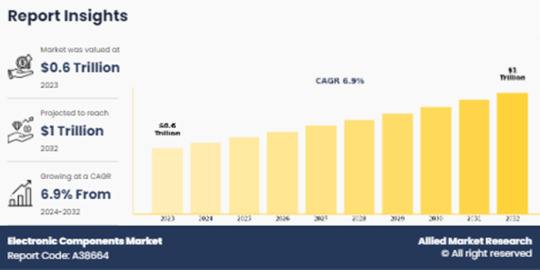
However, these obstacles notwithstanding; there are huge potential growth areas for electronic components especially in developing nations undergoing rapid urbanization and digitalization. These regions which have been characterized by changing tastes among consumers as well as government programs aimed at modernizing the infrastructure provide fertile ground for broad based use of electronic components in industries such as retail commerce, transportation services, and hotels. The resultant demand for electronic components that will come about when emerging markets adopt digital technologies to facilitate communication process, improve efficiency both in manufacturing sector and service delivery alongside enhancing customers experience will significantly define their role as drivers of global industrial growth.
The electronic components market report is segmented based on type, application, and region. On the basis of type, the electronic components market forecast is divided into active components, passive components, and electromechanical components. Based on application, the electronic components industry report is classified into consumer electronics, automotive, industrial automation, telecommunication, aerospace and defense, healthcare, energy and power, and others.
On the basis of region, it is analyzed across North America (the U.S., Canada, and Mexico), Europe (the UK, Germany, France, Italy, and the rest of Europe), Asia-Pacific (China, Japan, India, South Korea, and rest of Asia-Pacific), Latin America (Brazil, Argentina, and rest of Latin America), and Middle East and Africa (UAE, Saudi Arabia, and rest of Middle East & Africa).
The key electronic components company list profiled in the report includes Intel Corporation, Samsung, TSMC, Texas Instruments, Broadcom Inc, Bosch, NXP Semiconductors, STMicroelectronics, Skyworks Solutions, and Analog Devices. These key electronic components company listed in this market have adopted strategies such as product portfolio expansion, mergers & acquisitions, agreements, geographical expansion, and collaborations to enhance their market penetration.
According to Himanshu Jangra, Lead Analyst, Semiconductor and Electronics, at Allied Market Research, “The global electronic components market value is expected to witness considerable growth, owing to increase in demand for consumer electronics solution paired with rise in disposable income in emerging economies such as India, South Korea, Brazil, Dubai, and especially in Asia-Pacific and LAMEA region, which is expected to drive the market growth.”
Key Findings Of The Study
The electronic components market insights is growing fast due to an increasing consciousness of the environment and the need to reduce carbon emissions.
Demand for the electronic components market comes majorly from the consumer electronics sector, as there are smartphones, wearables, and gadgets everywhere that need high-performance compact parts.
Competition in this market is intense with innovative firms fighting for space alongside well-established ones offering cheaper solutions.
The Asia-Pacific region leads the charge, propelled by government investments, rapid urbanization, and robust consumer retail sectors, making it a prime market for electronics component growth.
#electronic#electronic music#electronic components#electras components#pc components#automotive components
0 notes
Text
ICT teachers have grown to appreciate the vital role that technology can play in student’s educational development and for the teaching profession as a whole. The role of technology departments can be complex and multilayered. They can be drivers for new technology systems to be implemented within the schooling community. Also other members of the staff can help the technology department. The role of teachers can be vital. Teachers affiliated with other subject areas may use the technology as a knowledge base for their cohort. Instructors of the technology related subjects may frequently be given the basic training from experts when new systems are introduced within a school with the expectation that they will rapidly assimilate the knowledge and be able to successfully cascade the knowledge to the rest of the school. Virtual Learning was first introduced within my school community in the summer of 2007 by the Head of ICT and the designated Project Manager with responsibility for networking. OR The paper "Virtual Organization Systems Social Analysis " is a perfect example of a management research paper. The report has set out to analyze and solve problems of SSM and DCL by use of virtual organization model, which relies more on viable systems and cybernetics in our changing modern world. The social analysis recommends systems upgrading and systems changing to implement adaptive business intelligent systems at both companies without losing their different autonomy. These two will remain separate but cooperate on specific areas while retaining their core businesses. To achieve this goal a pioneer team is a recommendation for gradual systems upgrade in both companies in order to implement this system immediately with the two companies allocating new budgets in their commitment to satisfy increasingly consumer aesthetic tastes and surpass international market needs by utilizing the virtual organisation across borders. Due to its international business capacity it, take advantage of the current global drives of e-government and ICT parks. Thus, the system will transform both SSM and DCL into the international markets mass demand of more than six billion human beings in need of domestic appliances worldwide. This is will only be possible if the executive manager implements this report urgently before current problems sink down the two firms to collapse and big losses.The future of business is the basis of the present knowledge management about market trends as well technological applications. The modern world is changing rapidly and businesses must adapt or die, to survive is a skill and the mastery of survival is pegged on intelligent business systems traversing limits of thought creativity beyond physical environments to virtual organisations. These virtual organisations are the building blocks of the internet-connected wireless inter-satellite communications in milliseconds around the world for market demands and sophisticated customer tastesThe frameworks for success depend on capacity building of skills capabilities and effectiveness of sustainable profits margin driven by computerisation and globalisation. Companies have to be close to the hearts of the customers as well as to the suppliers without losing their autonomy. Read the full article
0 notes
Text
SMART CITY (智慧城市)
A Smart City is an urban development concept that integrates information and communication technology (ICT) and various Internet of Things (IoT) devices to enhance residents' quality of life, improve urban services, and optimize resource efficiency. It is an urbanization that uses innovative technology to enhance community services and economic opportunities, improve city infrastructure, reduce costs and resource consumption, and increase civic engagement. Smart Cities leverage data and technology to address urban challenges and create sustainable, connected, and efficient urban environments. A Smart City supported by transparent information gathering and processing. The goal is to achieve more efficient management, scientific development, and a better living environment for its residents, as exemplified by Hong Kong's vision of becoming a world-class smart city.

A smart city is an urban area that uses digital technologies to improve the quality of life for its citizens, promote economic growth, and foster sustainable development:
Uses technology: Smart cities use technologies like the Internet of Things (IoT), artificial intelligence (AI), and data analytics to collect and analyze real-time data.
Improves services: Smart cities use technology to improve services like transportation, water supply, waste disposal, and building lighting and heating.
Enhances the urban environment: Smart cities use technology to create safer public spaces and meet the needs of an aging population.
Promotes economic growth: Smart cities use technology to optimize city functions and promote economic development.
Improves quality of life: Smart cities use technology to improve the quality of life for citizens.
Fosters sustainable development: Smart cities use technology to reduce emissions and improve resource use.

IEEE Standards Help Enable Smart City Technologies for Humanity | IEEE 标准有助于为人类提供智慧城市技术
As cities transform into vibrant centers of technology and creativity, the vertical skyline emerges as an innovative solution to urban issues. This architectural breakthrough changes our perception of space and relationship with the environment. High-rise buildings featuring green terraces and solar panels create a sustainable landscape within concrete jungles. The vertical skyline signifies the blend of nature and technology, with smart structures using sensor-driven systems to enhance energy efficiency and residents' quality of life. Vertical gardens boost air purification and provide peaceful retreats from city life. In this advanced setting, commuting is revolutionized with high-speed elevators and sky bridges, while drones deliver goods, reducing traffic. Community is essential in the vertical skyline, as shared spaces encourage social bonds. Rooftop parks and communal amenities foster relationships and inclusivity in urban planning, ensuring accessibility for all. As we move toward this vision, we must balance innovation with preserving cultural identity and incorporating local art and history into the design. Ultimately, the vertical skyline embodies a forward-thinking approach to building livable, sustainable, and interconnected urban environments, merging the natural world with the urban experience. As we ascend these high-rise structures, we find not only homes and offices but also spaces dedicated to fostering biodiversity. Rooftop gardens and vertical farms contribute to local food production, reducing the carbon footprint associated with transportation while promoting a farm-to-table ethos within the heart of the city.
The integration of smart technologies enhances waste management and resource efficiency, featuring innovations like composting systems and rainwater harvesting that support sustainability initiatives. Additionally, the use of recycled materials in construction reflects a commitment to minimizing environmental impact, allowing cities to evolve without compromising our planet’s future.
Amidst this growth, we recognize the significance of community-driven initiatives that empower residents to participate in urban design. Initiatives that involve local stakeholders ensure that the vertical skyline is not merely a place for habitation but a thriving hub of creativity and collaboration. Public art projects and cultural programming can transform shared spaces into vibrant canvases for expression, reflecting the diverse narratives that shape urban identity.
As we envision this future, we must also address potential challenges, from incorporating affordable housing in these vertical developments to ensuring that technological advancements do not widen the gap between socioeconomic classes. Engagement with diverse voices throughout the planning and implementation processes is vital, resulting in inclusive designs that prioritize equity and accessibility.
This harmonious ecosystem of the vertical skyline fosters resilience against climate change by incorporating nature-based solutions that mitigate urban heat island effects and enhance urban drainage systems. As walls dissolve between urban living and nature, cities can pivot towards models of regeneration rather than mere consumption.
In summary, the vertical skyline represents a holistic vision of urban life—one where innovation, community, sustainability, and culture intersect seamlessly. As we embrace this transformative journey, let us champion a future where vertical living celebrates the past while propelling us forward, crafting cities that are not only habitable but also vibrant and alive.
Key components of a Smart City include:
Smart Infrastructure
Digital Connectivity
Data Analytics
Smart Governance
Sustainable Development
Procedure to Achieve Smart City:
Vision and Strategy
Stakeholder Engagement
Policy and Regulatory Framework
Infrastructure Investment
Pilot Projects
Sonetra KETH Architectural Manager/Project Manager/BIM Director 建築師經理、專案經理、BIM總監 Giám đốc Kiến Trúc, Giám đốc Dựán, Giám đốc BIM
#crossorigin=“anonymous”></script>#Affiliate#Earn Commission#Earning#jforce#Jumia#Jumia Force#Marketing#<script async src=“https://pagead2.googlesyndication.com/pagead/js/adsbygoogle.js?client=ca-pub-9430617320114361”#<meta name=“monetag” content=“07e99e76c61091cfc8c3590b90f57e37”>#<meta name=“google-adsense-account” content=“ca-pub-9430617320114361”>#Smart City#智慧城市#Sonetra#Netra#Sonetra KETH#NETRA#N8TRA#Sonetra Keth#Architectural Manager#Architectural Design Manager#BIM Director#BIM Manager#BIM Coordinator#Project Manager#RMIT University Vietnam#Institute of Technology of Cambodia#Real Estate Development#Construction Industry#Building Information Modelling
0 notes
Text
AboutMe
Hello my name is Gabriel Acebedo, I am a filipino and my religion is an evangelical christian and I am a student from University of the Immaculate Concepcion.
My hobbies are playing single player and multi- player video games, taking my dogs out for walk, biking, watching documentaries and excercising.
Aside in doing my hobbies as a STEM student of the University of the Immaculate Concepcion my goal in life is for me to succeed and reach what i should achieve to guide for a better future.
Sa Pagbasa ito ay ipinapakita ang aking Reaksyon papel tungkol sa aking karanasan.
“ Ang Sining Pagtuturo sa Murang Isipan “
Simula
Ang pagtuturo sa mga bata ay isang mahalagang gawain na may malaking papel sa paghubog ng kanilang kinabukasan. Ito ay hindi lamang tungkol sa pagbabahagi ng kaalaman kundi pati na rin sa paghubog ng kanilang ugali, pananaw, at kakayahan sa buhay.
Katawan
Sa proseso ng pagtuturo, maraming hamon ang kinakaharap, tulad ng kakulangan sa atensyon ng mga bata, iba’t ibang antas ng kakayahan sa pagkatuto, at ang pagkakaroon ng iba’t ibang personalidad sa loob ng silid-aralan.
Bukod sa kaalaman, mahalagang ituro rin ang mabuting asal, disiplina, at respeto sa kapwa. Sa panahon ngayon, kung saan malaki ang impluwensiya ng teknolohiya at social media, mas lalong nagiging mahalaga ang paggabay sa kanila upang lumaking may mabuting asal at tamang pagpapahalaga sa edukasyon.
Konklusyon
Sa kabuuan, ang pagtuturo sa mga bata ay isang hamon ngunit ito rin ay isang biyaya. Ito ay isang oportunidad upang makagawa ng positibong pagbabago sa buhay ng iba. Ang mga guro, magulang, at sinumang gumagabay sa mga bata ay may mahalagang papel sa paghubog ng isang mas maayos na hinaharap. Kung gusto mong maging mas personal ang reaksyon paper, maaari mong idagdag ang sarili mong karanasan o pananaw!

Our infographics shows the safety measures and what precautions should we take in order to stay safe when during there is or after a flood so that we may able know what to do and how can we survive this destruction.


In DRR this shows the exact floor plan of our classmate and how can we be able to determine the exit ways of this model, this alos helps us to understand what are the specific items that we should avoid and how can we be able to secure them without getting injured.
My insightful reflection about ICT
The nature of ICT in my life did many great things this not only change but guide us to have better understanding in editing photos, creating infographics and making blogs.
1 note
·
View note